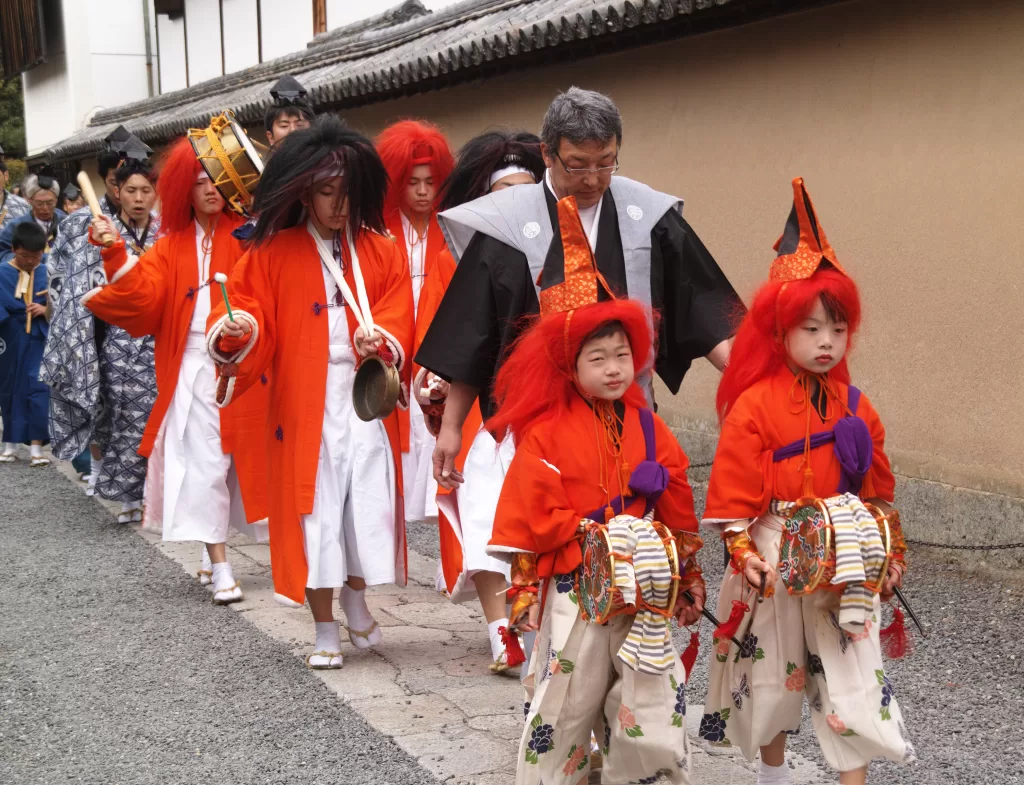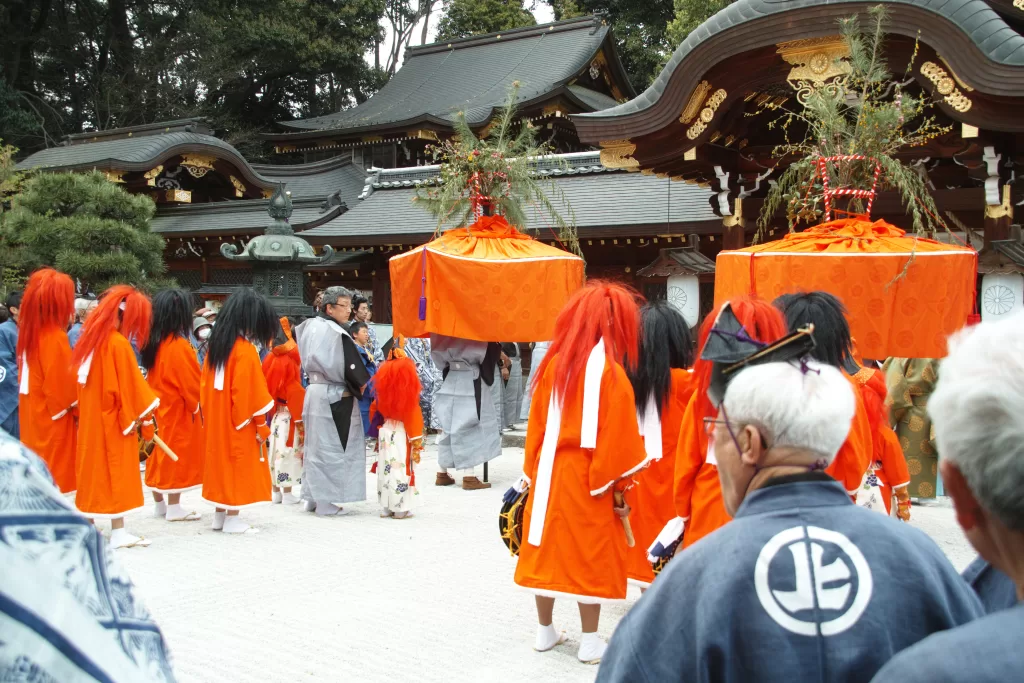The Yasurai Festival: Dancing Towards Health and Peace
The Festival Details
Every year, on the second Sunday of April, the streets of Kyoto bustle with excitement and anticipation as preparations are underway for the Yasurai Matsuri Festival. Highly revered and celebrated at three esteemed shrines; Imamiya Shrine, Genbu Shrine, and Kawakami Daijingusha Shrine, this festival serves as a symbolic beacon of traditional Kyoto culture.
Though each shrine garners respective attention during this festival, it is the Imamiya Shrine that sees the most footfall. Historical documents suggest that Genbu Shrine, however, is the birthplace of this unique chinka-sai festival, often termed as the goryoe ceremony aimed at pacifying evil spirits causing diseases. It’s definitely one of the most amazing Kyoto events in April.

Festival Origins
Standing as a testament to time, the Yasurai Matsuri Festival traces its roots to two ancient ceremonies which sought to quell epidemics that often reared their ugly head during the cherry blossom season. The “goryoe” functioned as a ritual ceremony for resting spirits of deceased individuals, while the “chinka-sai” was believed to reduce diseases through cherry blossom petals thought to act as pestilence deterrents. By invoking peace in nature, the festival organizers believe they would placate malignant deities intent on causing harm.
Demons Dance To Invite Good Health
Contrary to what many might think, ‘Red Hair Demons’ and ‘Black Hair Demons’—the centerpiece of the whole parade—are not representative of anything ominous or inauspicious. On the contrary, they are pivotal figures crucial to achieving health and protection against illnesses for all attendees. These demons gallivant through residential areas while singing hymns and playing musical instruments meant to attract mischievous deities who wreak havoc by spreading diseases.

The Significance Of Flower Umbrellas
One cannot discuss Yasurai Matsuri Festival without mentioning its defining feature—the large red flower umbrellas or hanagasa. These intricately decorated umbrellas are employed as an ingenious technique to capture goodness. Decorated with ephemeral spring flowers such as cherries and camellias sprinkled over them, these umbrellas lure away deities causing illnesses onto themselves thereby exorcising homes from bad health.
It is widely believed that anyone walking under these resplendent umbrella shields will be inoculated from ailments for an entire year—a claim that draws throngs of people annually wishing for good health.
Interactive Elements at Yasurai Matsuri
The Yasurai Matsuri experience goes beyond being a passive spectator with interactive components designed into its roster. One such element is “Yasurai Hitogata”, a purification ritual involving paper dolls bearing wishes of participants within Imamiya Shrine precincts.
Equally bewitching traditions hosted by Imamiya Shrine include Omokaru Ishi (Heavy-or-Light Stone) testing one’s luck based on how light or heavy they perceive a special stone after communicating their desires upon it. It is also suggested that rubbing affected areas post-interaction with Omokaru Ishi can expedite recovery from ailments.
Aburi-mochi (roasted rice cakes), another delightful custom associated with Yasurai Matsuri, adds a sweet finish to an enriching cultural exposure. It stems from folklore crediting these cakes conferred immunity to contagious diseases when consumed.
A Living Chronicle Of Ancient Kyoto
This ancient festival bears witness to tumultuous centuries when plagues ravaged Kyoto during Heian Period (794-1185). Citizens rallied against these disasters by performing ‘goryo-e’, rituals purposed to suppress harmful beings spreading devastation in their wake—an endeavor that gave way to Yasurai matsuri itself.
Today, this festival marches on preserving its ethos and fostering unity among participants in pursuit of shared respite from health afflictions. Deservedly recognized as one of Kyoto’s three unique festivals—you cannot mention Yasurai without mentioning Kurama Fire Festival or Uzumasa Bull Festival—it continues weaving history proudly bearing emblematic resonance every year.
Precautionary Measures
While joining festivities centered around Yasurai Matsuri promises great rewards spiritually and physically, worshippers are urged to respect social distancing norms considering current global epidemiological scenarios. The shrine authorities strongly recommend maintaining safe distances while participating in umbrella sharing sessions.
If you’re looking to immerse yourself in the rich cultural heritage of Kyoto, don’t miss out on the captivating Kyo Odori. Held annually in the Miyagawa-cho Kaburenjo Theater during early April to late April, this renowned performance showcases the beauty and elegance of traditional Japanese dance.